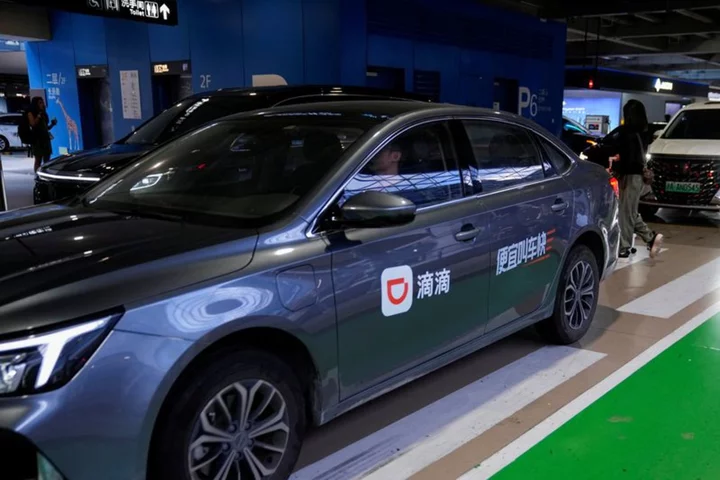By Casey Hall
SHANGHAI Shanghai driver Zhu Zhimin works 15 hours a day to earn the same money he was making only a few months ago working a regular shift, as he competes with an increasing number of Chinese rushing into the ride-hailing industry.
Zhu, who takes home 400-600 yuan ($55-$82) a day ferrying passengers from early morning to late at night, says he wasn't able to take a day off for three months earlier this year.
"I go back at midnight, I take a shower and then go to bed. I have no spare time," he said from behind the wheel. "My children are getting older, my parents are getting older, so my family needs money."
China's weak post-pandemic recovery and record youth unemployment are sending more people into the ride-hailing sector, flooding the market and eroding the incomes of many of the 5.8 million drivers registered for such apps.
On Tuesday, a raft of data highlighted how the world's second largest economy had slowed further in July, putting pressure on already faltering growth.
About 400,000 people began driving for ride-hailing firms in China between the end of April and the end of July, state media said, citing Ministry of Transport data.
Analysts see this more than 7 percent increase in the number of drivers as a manifestation of the subdued job market. Average income for employees in Shanghai is around 525 yuan a day, data from the city government shows, in line with what most drivers make working much longer hours than an office worker.
"The downturn of the socio-economic environment led to a reduction in job opportunities and an influx of labour into the ride-hailing industry," said Wang Ke, an automotive and travel industry analyst at Analysys, a market research firm.
"An increasing number of unemployed individuals make the ride-hailing industry their first choice."
China has more than 300 ride-hailing apps, which accounted for over 40% of total taxi trips last year, state media reported.
Cities including Shanghai, Sanya and Changsha have suspended issuing new ride-hailing permits. At least four others have issued warnings of overcapacity, with some saying drivers get fewer than 10 orders a day as a result.
"Because the economy is not doing well, many workers have been laid off and began ride-hailing," said James Cai, 33, from Haikou, the capital of Hainan island and one of the cities warning of too many drivers. "Most of them are 20-30 year olds."
Cai said he earns 200-300 yuan a day, driving for Didi Global - China's answer to Uber - from 8.00 am until close to midnight. Up until recently, he made 400 yuan a day plus bonuses, going home before 8.00 pm.
"This job is not working out," he added.
Didi did not respond to emailed questions about driver numbers, pay and the latest curbs in some cities.
'SELF-CORRECTION'
Wang, from Analysys, expects a market "self-correction" as some drivers drop out.
Nanxun Li, another Haikou driver, sold his car last month and quit a job he had been doing for 10 years, after his income dropped to 300-400 yuan a day from 1,000 when he first started.
"It's getting difficult to make ends meet," Li said.
But even with less drivers, making a living is likely to become more difficult for many people as China enters an era of much slower economic growth, economists say.
More than 21% of Chinese youth were unemployed as of June. China's statistics bureau said on Tuesday it will stop releasing jobless youth data, drawing public ire.
Shanghai driver Li Weimin's rationale for working underscores the shrinking job market.
"I don’t eat during the day, and I only have one meal after I get home at night," said the 45-year-old, who drives from 6.30 am to 1 am to take home around 500 yuan.
"But I must persist, because there is no other job."
($1 = 7.2761 Chinese yuan renminbi)
(Reporting by Casey Hall and Xihao Jiang in Shanghai and the Beijing and Shanghai newsrooms; editing by Marius Zaharia and Miral Fahmy)

